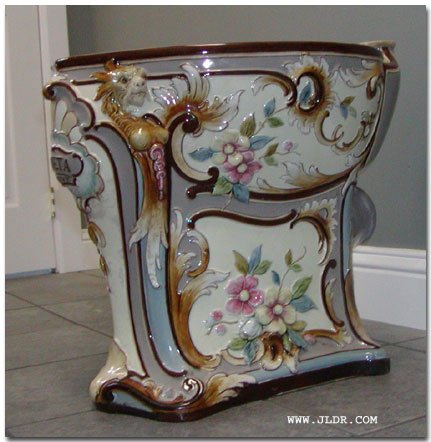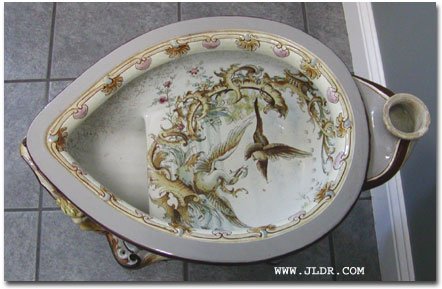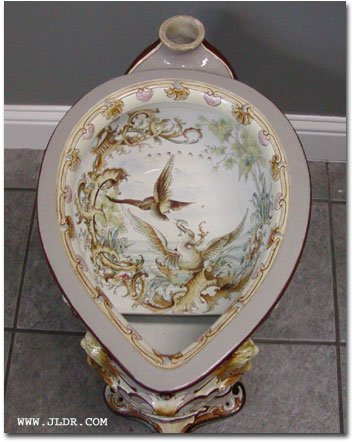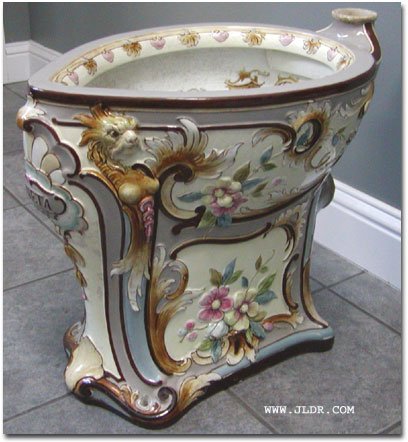|
|
|
|
|
|
| Does anyone know when and where this Victorian Porcelain Toilet was made? | |||

Victorian Porcelain Toilet Photo by R. Wilde |
|

Victorian Porcelain Toilet Photo by R. Wilde |

Victorian Porcelain Toilet Photo by R. Wilde |

Victorian Porcelain Toilet Photo by R. Wilde |

Victorian Porcelain Toilet Photo by R. Wilde |
|
This contributor recently acquired a quite ornate antique Victorian porcelain toilet. The owner would like to know when and where it was made.
He says he has never been in love with a toilet before until now. He has hugged a few in his earlier days but none of them ever turned into serious relationships ;-) If you have any ideas on when and where this was made, please send Email by using the link near the bottom of this page. Our visitors are the most knowledgeable. Here is a note from one recently and then a correction below that... "In a quick web search, I found a few references that might help you with the toilet. The word Vineta seemed to be a reference to a porcelain pattern. The person associated with it was Bo Lagencrantz. All the websites about this person are in a Scandinavian language. Hope this helps. Don't know how old your website is though, so you may already have figured out where it's from! NDS Elementary Librarian MO" The information received from the librarian is incorrect. This toilet was manufactured circa 1900 by Rudolf Ditmar in Znojmo, Moravia. Obviously, Znojmo, then mostly known by its German name Znaim, was part of the Austrian Empire. Ditmar started the pottery in 1879 in Znaim, so his mark, RDZ, stands for Rudolf Ditmar, Znaim. The owner should look for double circle with R.D.Z., a wing, and another device in the outer circle. The inner circle should have an 8 petaled flower or star. It may also/only have an impressed mark, which might be difficult to see, bearing the initials R.D.Z. with what looks like an 8 petaled flower in the center. The toilet is Victorian Majolica, which is earthenware pottery made in 19th century Britain, Europe and the USA with molded surfaces and colorful clear lead glazes--this toilet is NOT porcelain. I suspect that Vineta refers not to the pattern, but to the fabled, sunken, German city of Vineta. The idea of waste sinking below the surface would seem to be more believable to me, especially since one of the legends surrounding the city revolves around the idea that Vineta sank into the Baltic due to the sinfulness of its inhabitants. MHW German Teacher IN | |
| What else can you see in the images shown? Many times a photo is worth a thousand words and I've only elaborated with a few so why don't you add some "color commentary" to my collection. If your addition is worthy, you will find the quote added on the Comments to the Curator page. | |
Stamp here to "dump" mail to the official Outhouse Curator... 
Return to the Top RECOMMEND THIS SITE TO A FRIEND! Copyright © 2004-2009 | |